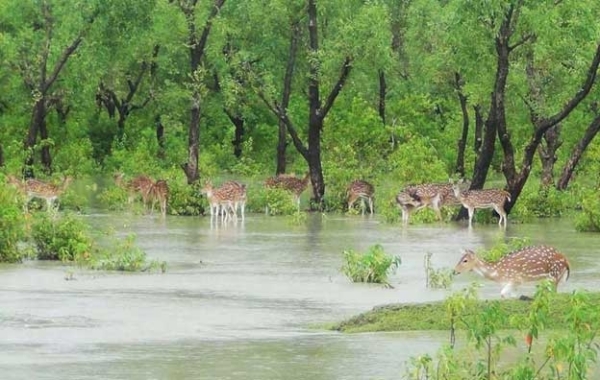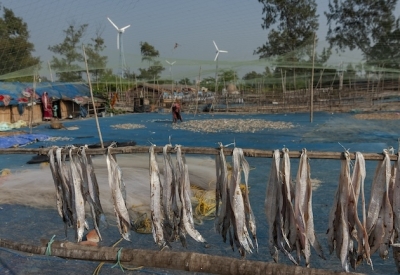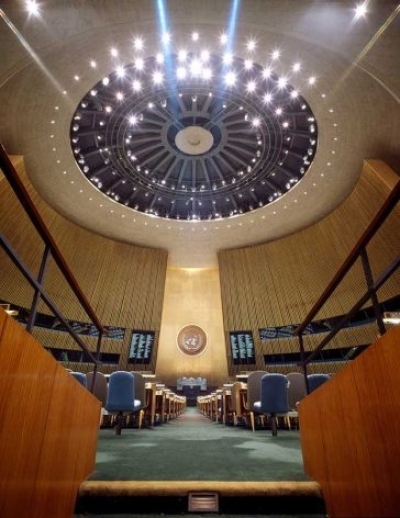DHAKA, Bangladesh, Jul 24 (IPS) — Blue tourism, widely referred to as Coastal or Maritime tourism, is a distinct idea from traditional tourism, which capitalizes on a country’s ocean, sea, or coastal region.
Coastal tourism is the largest market segment in the world, accounting for 5% of GDP and contributing 6-7% of total employment. Furthermore, coastal and maritime tourism will employ 1.5 million additional people worldwide by 2030.
Though Blue Tourism is not a new concept, but off late Bangladesh has been realizing its importance as it can help earning a lot of foreign exchange contribute to its GDP and accelerate the pace of achieving SDGs by 2030.
Blue Tourism: A Potential Blue Economy Avenue for Bangladesh
According to Asian Development Bank (ADB), coastal and maritime tourism has immense potential in the blue economy and could become one of the largest sources of tourism revenue in Bangladesh. Ocean contributed $6.2 billion in 2015 in total value addition to the Bangladesh’s economy which implies 3 percent of GDP (Business Standard 2020).
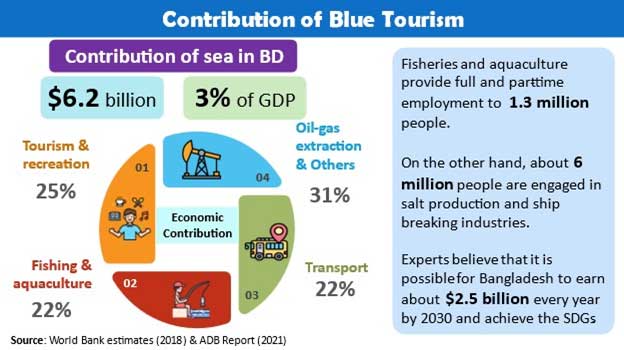
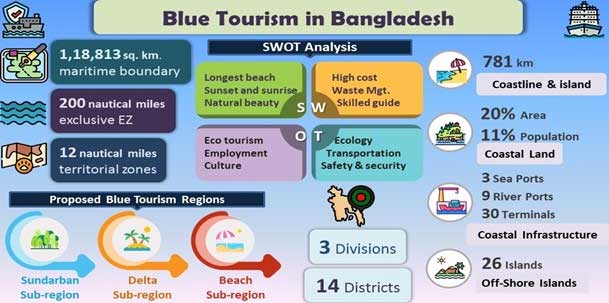
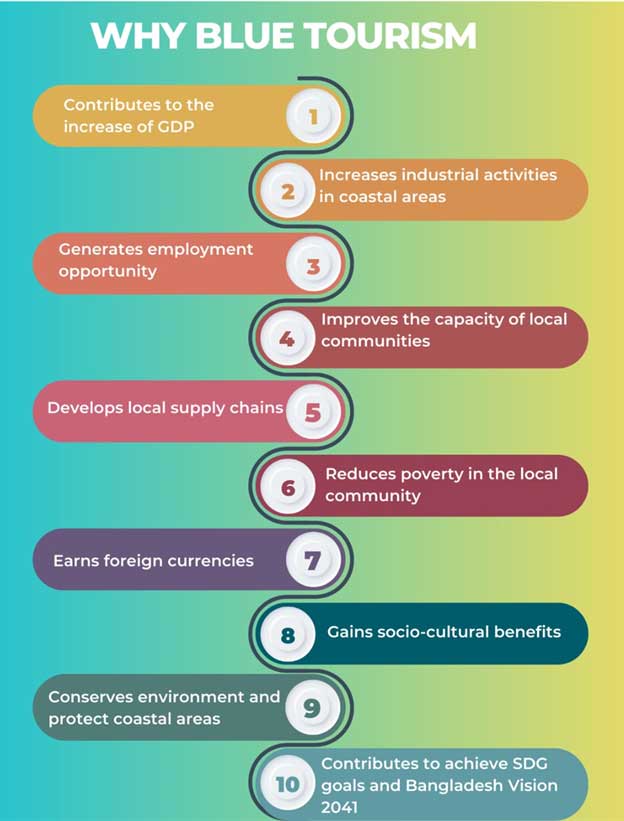
Potentials of Blue Tourism in Bangladesh
Maritime area of 207K sq. km, with 580 km of coastline, 200 nautical mile exclusive economic zone, and 12 nautical mile territorial zones creates unprecedent opportunities for Bangladesh to accelerate the growth of blue economy.
Icing on the top are the 75 large and small islands in the coastal and maritime zone of Bangladesh, which are regarded as touristy sites for their rich biodiversity. Coral reefs, seagrass reefs, sandy beaches, sandbars, marshes, flood basins, estuaries, peninsulas, mangroves etc. are a few examples of the aquatic life.
Currently these zones are endowed with 17 fish sanctuaries, 5 national parks, and 10 wildlife sanctuaries, all of which can spur the tourism sector’s expansion. As a result of the discovery of numerous new sea beaches, the sector continues to expand and diversify.
Policies and interventions introduced to nurture the potential
The government of Bangladesh along with the vibrant private sector have introduced various initiatives to develop and promote blue tourism in Bangladesh.
Since 2015, the Government of Bangladesh (GoB) has been working to unleash the potentials of Blue-Economy. To ensure rapid implementation Government of Bangladesh (GoB) has highlighted major action points in the seventh five-year plan (7FYP) and eighth five -year plan (8FYP) of Bangladesh.
Additionally, the Ministry of Foreign Affairs (MoFA), GoB, had formed the "Blue Economy Cell" in 2017 to coordinate the running blue economy related projects across sectoral ministries and departments. The government of Bangladesh has also laid emphasis on the BLUE tourism in different development plans including Perspective Plan-2041, and Delta Plan-2100.
In order to exploit the tourism potential, Sea cruises between Bangladesh and India have already been launched in March 2019. To encourage foreign visitors to Cox’s Bazar’s largest sea beach, the Bangladesh Economic Zone Authority (BEZA) has been establishing three exclusive tourism parks there. These parks include Naf Tourism Park, Sabrang Tourism Park, and Sonadia Eco-Tourism Park.
Bangladesh Tourism Board has formulated a Tourism Master Plan for 25 years (2023-2047) for the country. Primarily a total of 255 tourist sites under 11 tourist clusters have been identified.
These tourist sites are potential for Eco-Tourism, Beach & Island Tourism, Pilgrimage/Spiritual Tourism, Archaeological & Historical Tourism, Riverine Tourism, Adventure and Sports Tourism, Rural Tourism, Ethno-tourism, MICE Tourism and Cruise Tourism in this coastal and maritime region.
The tourism master plan includes 200+ potential interventions overall. The Bangladesh Tourism Master Plan calls for the immediate development of 13 islands altogether in the coastal region.
Bangladesh Tourism Board (BTB) and UNDP Accelerator Lab Bangladesh’s Joint Initiative:
In the last quarter of 2022, Bangladesh Tourism Board (BTB) in collaboration with UNDP Accelerator Lab has conducted research on Blue Tourism in Bangladesh, especially in the coastal regions. The core objectives of the joint research comprise identifying the coastal and maritime tourism resources, facilities, and tourist activities in Bangladesh, mapping tourist minds, and identifying the sustainability of Blue Tourism in Bangladesh.
However, with the technical assistance of UNDP Bangladesh Accelerator Lab, Bangladesh Tourism Board (BTB) has begun to work on the execution of Bangladesh’s Tourism Master Plan.
Dr. Ramiz Uddin is Head of Experimentation, UNDP Accelerator Lab, Bangladesh; Mohammad Saiful Hassan is (Deputy Secretary), Deputy Director (Research and Planning), Bangladesh Tourism Board, Ministry of Civil Aviation and Tourism – Bangladesh.
Source: UNDP
IPS UN Bureau

